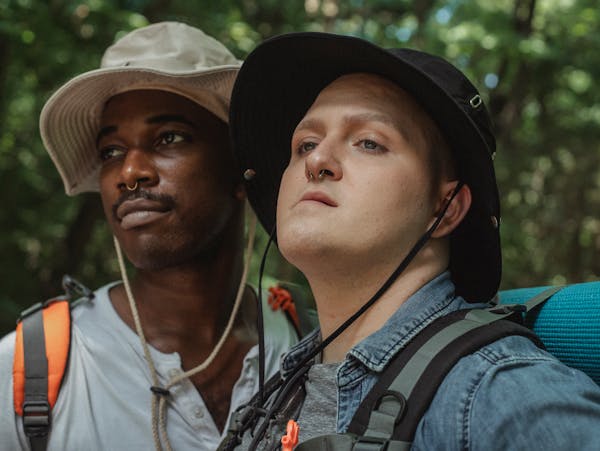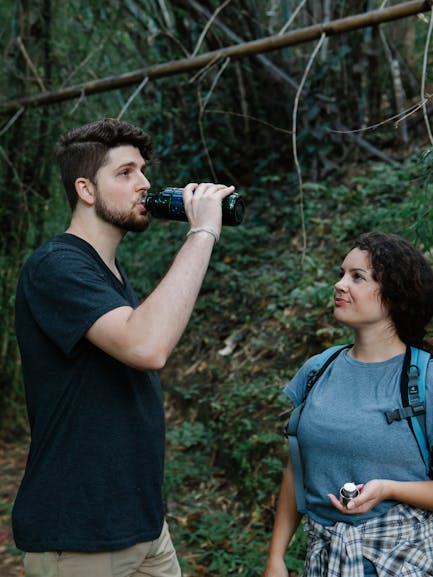
Getting out into nature during summer is one of the best ways to enjoy the beauty of the season. The vibrant flora, long days, and warm weather make hiking tempting. But, this time of year also brings challenges that require extra precautions. Neglecting safety can quickly turn an adventure into a risky experience that could have been avoided with some preparation.
Extreme heat is a major concern for summer hikers and hiking in Australia in summer, things can really heat us. The high temperatures can lead to dehydration, heat exhaustion, or even heat stroke. Understanding the impact of these conditions is crucial when planning your hike and can save you from serious health issues.
Hiking in National Parks or remote areas adds another layer of complexity. Trails might not be as well-maintained, weather can be more unpredictable, and the chances of encountering wildlife increase. It’s essential to be well-prepared and thoroughly informed about the environment you’re venturing into.
I’ve put together my summer hiking sasfety tips that will guide you through safely hiking in hot weather. From planning wisely and dressing appropriately to staying hydrated and understanding the risks of heat and altitude, these practical tips are vital for a safe and enjoyable hike during the summer months.
Plan Ahead: Essential Pre-Hike Preparations
Before hitting the trail, always start with a solid plan. The success of your hike heavily relies on how well-prepared you are.
Check the Weather Forcast
- First up, check the weather forecast. Extreme heat or sudden weather changes can make a pleasant hike extremely challenging. If the forecast looks rough, it might be wiser to reschedule.
Choose Your Trail Wisely
- Choosing the right trail for your fitness level and experience is next also considering the length of the trail. It may be wise to opt for a shorter walk. Reasearch websites for the National Park where you intend to walk. They can provide insights on trail difficulties and conditions, helping you pick a path that’s right for you. Going beyond your limits can lead to unnecessary risks – know your boundaries.
- Choose a trail that is sheltered, with cool shaded rest spots, rather than exposure to the full sun. Better still, a walk near a water hole, pool or stream for cooling off in. I often wet my hat in a stream , to help me keep cool.
- Leave a detailed trip plan with someone trustworthy. Share your intended route, expected return time, and any other relevant details. This way, if something unexpected happens, there’s someone who knows your whereabouts and can get help if needed. Safety in numbers doesn’t just apply on the trail; it’s crucial in planning too.
- Check for park closures or fire restrictions before heading out. Summer can bring fire dangers and park services often close areas as a precaution. Knowing these details ahead of time can save you from disappointed, last-minute changes.
- Always have an emergency plan ready. Be aware of bushfire dangers and have a strategy in case you encounter one. Know the quickest way out and have contacts for emergency services saved on your phone. Preparation can make all the difference in high-stress situations.
Optimal Timing: When to Hit the Trail
- Time your hike for the coolest parts of the day. Early mornings or late evenings are generally the best since the sun isn’t at its peak. This can significantly reduce the risk of heat-related issues.
- Avoid hiking during the hottest part of the day, usually between 2-4 PM. Not only will you avoid the most intense sunlight, but your body will also thank you for the cooler temperatures.
- Night hikes can be a fun and cooler alternative. Just ensure you’re comfortable navigating in the dark and have the right gear, like a headlamp with extra batteries. Some trails that are beautiful by day transform into magical experiences by night.
- Always plan your hike duration carefully to avoid getting caught in the dark unexpectedly. Account for the time it takes to hike out and back, plus any breaks you might need along the way.
- Remember, starting or ending a hike when temperatures are cooler doesn’t just affect your comfort level – it can seriously impact your safety. Extreme heat can lead to dehydration and heat-related illnesses, which are best avoided by hiking at more temperate times.
Dress and Pack for Success
Choosing the right gear for summer hiking is crucial. It starts with what you wear.
- Opt for lightweight, long-sleeved clothing in light colors. These clothes help keep the sun off your skin while promoting breathability, which is essential in the heat.
- A broad-brimmed hat and sunglasses are musts for protecting your face, eyes and ears from harmful UV rays. Don’t forget to slather on sunscreen to guard against sunburn.
- Packing right is just as important as dressing right. The essentials for hiking include items like water, food, first aid, and navigation tools.
- A personal locator beacon is a good idea in areas where cell service is spotty. This small device can be a lifesaver in an emergency.

In the end, proper preparation with your attire and pack can keep many potential issues at bay. Comfort and safety go hand-in-hand, and having the right gear simplifies your hike and lets you focus on enjoying the beauty around you.
Stay Hydrated and Take Regular Breaks
- Staying hydrated is non-negotiable when you’re hiking in the heat, you’ll need a lot more water—think 3-4 liters per person. To avoid water-related problems, also carry something for electrolytes since they help with hydration and keeping your energy levels balanced. I use concentrated mineral salts to avoid sugary electrolyte drinks.
- You need to drink water consistently, but avoid overdoing it. Drinking too much water too quickly can lead to a condition called hyponatremia, where the sodium levels in your blood get too low. Sip water at regular intervals rather than chugging it all at once, which is why I prefer to use a water bladder. I also carry salt with me.
- Taking regular breaks is another key to avoiding heat-related issues. Find shaded spots to rest, allowing your body to cool down. It’s not just about beating the heat; rest helps your muscles recover and keeps your energy up for the hike ahead. If you feel dizzy or overly fatigued, it’s time to rest, regardless of where you are on the trail.
- Snacks are also your friend on the trail. Pack foods that offer good nutritional value and can boost your energy. Think nuts, dried fruits, or energy bars. These foods help maintain your blood sugar levels and keep you feeling energized throughout your hike. Nuts are my go to.
- Pay close attention to signs of heat exhaustion or heat stroke. Symptoms include headache, dizziness, rapid heartbeat, or nausea. If you or anyone in your group experiences these, it’s crucial to get to a cooler area immediately and rehydrate. Ignoring these symptoms can be dangerous.

Understand Heat and Altitude Risks
- Understanding how heat affects your body is vital. Heat-related illnesses like sunburn, dehydration, heat exhaustion, and heat stroke are real threats. Knowing the symptoms of these conditions can make a big difference. For example, if you start feeling dizzy, have a rapid heartbeat, or develop a headache, it’s a sign to take a break and cool down.
- Altitude adds another layer of complexity to your hike, especially if you’re venturing into mountainous areas. Higher elevations can lead to altitude sickness, which comes with its own set of challenges. Symptoms include headaches, nausea, and shortness of breath. The risk increases the higher you go, so it’s essential to be aware and pace yourself accordingly.
- Acclimating slowly to higher altitudes can help mitigate some of the risks. If you’re planning to hike at high elevations, consider spending a day or two at intermediate altitudes to let your body adjust. Staying well-hydrated and maintaining a steady pace can also help prevent altitude sickness.
Whether you’re dealing with scorching heat or high altitudes, preparation is crucial. Equip yourself with knowledge and be alert to how your body is responding. Sometimes, the best decision is to turn back or take a longer break rather than pushing through when conditions are tough.
Emergency Preparedness and Trail Safety for Summer Hiking
Trail safety always applies but in the hotter months there are additional safety issues to be aware of.
- Wildlife encounters can be part of the adventure, but they require caution. Keep an eye out for animals like snakes and bears, especially in warmer weather. Stay on designated trails where you’re less likely to stumble into wildlife unexpectedly. Despite it being hotter, I always hike with gaiters in the summer and carry 2 snake bandages. Here is how to treat a snake bite.
- Fire risks are higher during hot weather, so be prepared. Familiarize yourself with the procedures for lightning, flash floods, and other natural hazards specific to the area you’re hiking in. Knowing what to do in different scenarios can keep you calm and safe.
As it goes with hiking, being prepared is the key. With a few adjustments to your start time and choice of routes, plus the rights gear and extra water, and armed with the knowledge and signs of heat induced illnesses, you can hit the trails safely in the summer.
Happy hiking!
If you have any questions or would like to share your summer hiking experiences, please do so below.
